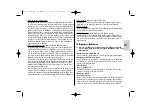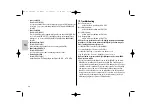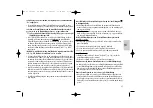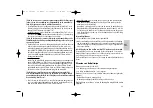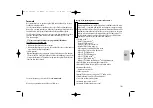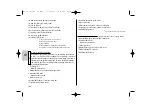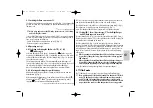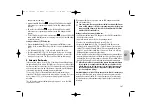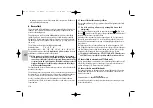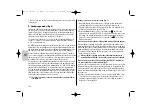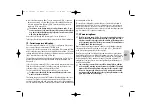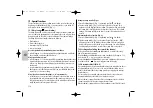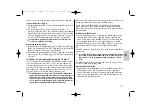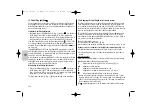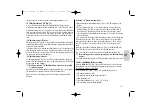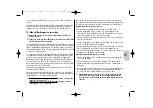
106
ķ
TTL function, then uncontrolled full-power flashes will be fired when
the shutter release is pressed! The TTL function can only be tested if a
film has been loaded in the camera!
In TTL mode, the exposure readings are taken by a sensor built into the ca-
mera. This sensor measures the light reaching the film through the camera
lens. An electronic control circuit within the camera transmits a stop signal to
the SCA adapter (optional extra) as soon as the film has been exposed by
the correct amount of light, thereby instantly interrupting the flash.
The advantage of this flash mode is that all factors influencing correct ex-
posure of the film (filters, change of aperture and focal length with zoom len-
ses, extensions for close-ups, etc.) are automatically taken into account.
The „ok“ display on the mecablitz lights up for approx. 3 sec. when flash ex-
posure was correct.
An additional acoustic signal can be activated on the mecablitz; see
„12.1 Bleep function“.
Setting procedure for the TTL flash mode:
• Equip the mecablitz with a suitable SCA adapter and mount on the camera.
• Adjust the camera as described in its operating manual.
• Switch on the mecablitz with the main switch
(Fig. 1).
• Depress the
Mode
button
(Fig. 1) repeatedly until
TTL
flashes on the
display. Push the setting disk
(Fig. 1) in the direction of the arrow to sto-
re this setting. The selected operating mode will be automatically stored
after approx. 5 seconds if the setting disk is not pressed. The
TTL
icon will
stop flashing and will be continuously displayed after storage.
• It is possible that ISO film speed, zoom and f-stop will not be automatically
transmitted from the camera to the mecablitz, depending upon the camera
type and SCA adapter. In this case simply set the corresponding values
manually on the mecablitz. ISO film speed and f-stop are only required for
correct distance and flash range indication on the LC display and are
therefore irrelevant for TTL flash shots. Consequently, it is not imperative to
set them.
☞
• Zoom reflector positioning is important for the correct illumination of the
entire subject. It should therefore always be adapted to the focal length of
the lens.
Tip:
If you are using a zoom lens and do not constantly need the full power and
maximum flash range of the mecablitz, you can leave the zoom reflector at
the shortest focal length of the zoom lens. In this manner the entire subject
will be uniformly illuminated, thereby also eliminating the need to constantly
adapt the zoom reflector position to the given focal length.
Example:
Let us assume that you are using a 28 mm - 80 mm zoom lens. In this case
you set the zoom reflector to position 28 mm!
If the mecablitz is used with an SCA 3xx2 adapter on a camera that
transmits data to the flash unit, it can happen that the ISO speed
rating is not displayed (depending on the camera model); see the
operating instructions for the SCA adapter. It may then be impossible
to change the ISO film speed and aperture! With wide differences in
contrast, e.g. a dark object in the snow, corresponding exposure cor-
rections may be necessary in TTL mode (see Chapter 14.).
3.1 Sub-modes of TTL flash mode
Different flash sub-modes can be set when the mecablitz is in TTL mode.
The number of possible sub-modes depends on the SCA adapter and
the given camera:
• TTL-remote with address „Ad1“
(see Chapter „7.1 Metz cordless TTL remote mode“).
• TTL-remote with address „Ad2”
(see Chapter „7.1 Metz cordless TTL remote mode“).
• E-TTL flash mode (only with SCA 3102 and a suitable Canon camera; see
operating instructions for the SCA adapter and the camera).
• E-TTL-HSS flash mode; high-speed synchronisation (only with SCA 3102
and a suitable Canon camera; see operating instructions for the SCA
☞
☞
704 47 0099.A3 54 MZ-4i 01.02.2007 13:41 Uhr Seite 106


